Rare Rides Icons, The Nissan Maxima Story (Part IV)

After its short-lived first generation outing as a rear-drive car from 1981 to 1984, the PU11 Maxima of 1985 adopted the front-engine, front-wheel drive format the Maxima kept permanently. But that wasn’t the only precedent set by the PU11, as Nissan decided to move forward with V6 engine configurations and leave the inline-six in the past.
The addition of the sporty SE trim with its monochromatic details, and fancy electronic options like a Sonar Suspension System were both indications of where Nissan was headed with the Maxima. It was a sportier and more interesting direction than its stiffest competition, the staid and conservative rear-drive Cressida. Sales showed what buyers preferred, as the Maxima outsold the Cressida many times over throughout the mid-Eighties. And at the end of the decade, Nissan gave customers more of what they wanted with the very first 4DSC, a four-door sports car.
At this juncture, it’s relevant to have a word on the bird, the Bluebird. The third-gen Maxima was the first to diverge from a Bluebird basis. While the P11 Maxima was larger and different than the equivalent U11 Bluebird, they were still closely related. With the arrival of the J30 Maxima in 1989, the Bluebird flew in a different direction.
Nissan’s lineup was in expansion mode in the late Eighties, and the Bluebird branched off into a sidebar. There was a Bluebird for Europe on the T12 platform, which North America received as the (older) Stanza and its variants. But the legitimate Bluebird successor was the U12, which arrived in late 1987 for the ‘88 model year.
The U12 was distributed widely around the globe and was also sold in North America as the Stanza. From there forward, the Bluebird was in a class below the more luxurious Maxima, which was never again associated with the Bluebird.
In its new guise the J30 Maxima was a big step forward in every single way. It was larger, better looking, more advanced, nicer to drive, more luxurious, and better made than its PU11 predecessor. We could conclude there with that blanket statement, but we know you want more details.
The J30 platform had a longer wheelbase than the PU11 - 104.3 inches - up from 100.4” previously. The 1989 Maxima’s overall length jumped considerably over 1988, from 181.5” to 187.6 inches. Width increased notably as well, from 66.5 inches to 69.3 inches. Overall height increased slightly from 54.7” to 55.1 inches, though the new Maxima certainly didn’t look taller than the outgoing model.
Accompanying the new model was a simplification in body style offerings. Since it was no longer tied to the Japanese market Bluebird and was designed even more for the American customer than the PU11, there was only one body style: sedan. The prestigious JDM hardtop version went away after 1988, as did the slow-selling Maxima wagon.
Worth noting, the U11 Bluebird wagon continued in production through mid-1990, as the new U12 Bluebird (Stanza) did not offer a wagon. Nissan opted for a five-door hatchback Stanza for cargo lovers. Ultimately, the Bluebird wagon was replaced by the Avenir. Avenir was a wagon version of the Primera, a car distributed in North America as the Infiniti G20. Picture it, a G20 wagon in red. Tasty.
Mechanical changes in Maxima’s third generation followed the simplification route as well. Gone were the Japan-specific 2.0-liter V6 and its turbocharged variant; all 1989 Maximas shared the same 3.0-liter VG30E V6. That was the same engine as in the 300ZX and was carried over from the prior Maxima. The introductory V6 made 160 horsepower, delivered to the front wheels via a five-speed manual or four-speed automatic. It used a cast iron block, and single overhead cams (SOHC). The engine was used for all GXE (luxury) trims for the J30 generation’s run between 1989 and 1994.
The VG30E was also used on the sporty SE trim from 1989 to 1991. At that point Nissan made an interesting engineering choice. They reworked the VG30 into the VE30DE, which introduced some additional excitement to the Maxima. Exclusive to Maxima SE between 1992 and 1994, the VE30 had dual overhead cams (DOHC), 24 valves, variable valve timing, and a variable intake manifold. It was also driven by timing chains where the VG30 relied on belts.
With 190 horsepower and 190 lb-ft of torque, it was more impressive than the VG30 but less so than the upcoming VQ30. The VE30 was the only VE series engine, and was used only in the Maxima SE for three model years. Both the VE and VG30 were effectively replaced by the line of VQ engines (1994-present).
The SE also received its own version of the five-speed manual from 1991 to 1994, and a different version of the four-speed automatic for those years. The automatic in particular had stronger internals in SE usage, to cope with the extra power. Other major mechanical differences between GXE and SE included wheels that were a half-inch wider and a firmer suspension.
Fitting its new and more upmarket mission, the J30 Maxima was considered a midsize car for the first time. It was only the second Japanese sedan in North America to meet the midsize mark when it debuted a couple of years after the Mazda 929. Believe it or not, the 929 was smaller in every dimension than the third-gen Maxima.
The J30 generation was the first Maxima sold in markets outside Japan and North America, as Nissan expanded product consolidation into the European and Australian markets. In Europe where the Maxima was considered a large executive car, it replaced the rear-drive Laurel. The Laurel was a relative of the Skyline, and in production since 1984 (though it looked much older). The Euro Maxima was available in an unlabeled 3.0 trim, as well as 3.0 S and 3.0 SE.
In another interesting international market twist, the Australian arm of Nissan started importation of the Maxima in 1990. In a moment that was surely decried by the local Japanese car enthusiasts, the Maxima was a replacement for the locally produced R31 generation Skyline. The boxy Skyline was offered as a sedan and wagon in the Australian market between 1985 and 1990.
Trims in Australia were initially called M and Ti, which roughly corresponded to GXE and SE. Though both trims were well-equipped, the Ti did not receive the 190 horsepower SE engine like North American models. Later the M trim spawned an LE, which meant a standard sunroof and a CD player. Shortly thereafter the M trim was renamed Executive.
There’s plenty of information to review on the first 4DSC, so we’re going to spend two installments on it. Next time we’ll go over the 90s-ready styling and technology details, its US pricing, and some sales figures. Until then, always remember to 4DSC responsibly.
[Images: Nissan]
Become a TTAC insider. Get the latest news, features, TTAC takes, and everything else that gets to The Truth About Cars first by subscribing to our newsletter.

Interested in lots of cars and their various historical contexts. Started writing articles for TTAC in late 2016, when my first posts were QOTDs. From there I started a few new series like Rare Rides, Buy/Drive/Burn, Abandoned History, and most recently Rare Rides Icons. Operating from a home base in Cincinnati, Ohio, a relative auto journalist dead zone. Many of my articles are prompted by something I'll see on social media that sparks my interest and causes me to research. Finding articles and information from the early days of the internet and beyond that covers the little details lost to time: trim packages, color and wheel choices, interior fabrics. Beyond those, I'm fascinated by automotive industry experiments, both failures and successes. Lately I've taken an interest in AI, and generating "what if" type images for car models long dead. Reincarnating a modern Toyota Paseo, Lincoln Mark IX, or Isuzu Trooper through a text prompt is fun. Fun to post them on Twitter too, and watch people overreact. To that end, the social media I use most is Twitter, @CoreyLewis86. I also contribute pieces for Forbes Wheels and Forbes Home.
More by Corey Lewis
Latest Car Reviews
Read moreLatest Product Reviews
Read moreRecent Comments
- ToolGuy There was a time when in a place called America there were roads, and they were paved, and they were paved smoothly enough for a vehicle like this. Perhaps our next President will bring back that concept.
- ToolGuy I suppose I will listen before commenting. (TG, what a fair-minded dude!)
- ToolGuy "The technology is much more advanced to be better than a role model driver,”• Do any of you know what a "role model driver" is? No, I guess you wouldn't. 😉
- ToolGuy I might be Batman.
- Lou_BC Well, I'd be impressed if this was in a ZR2. LOL



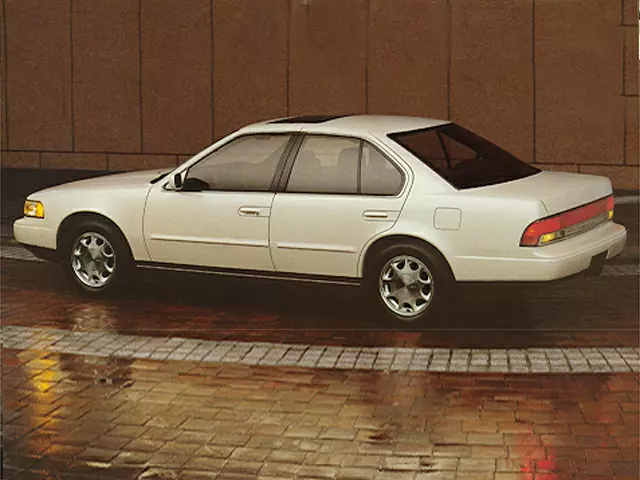



















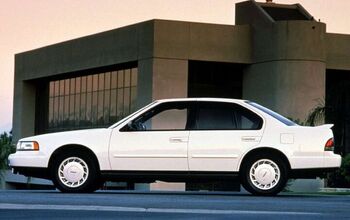
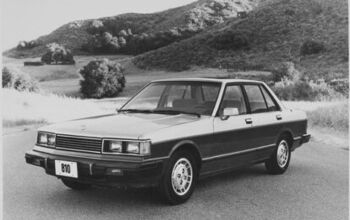
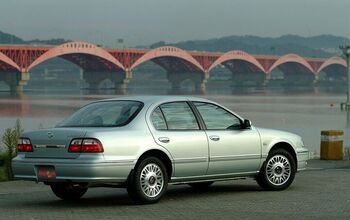
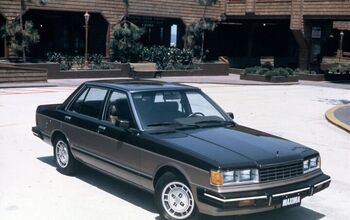
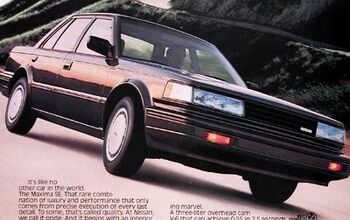










Comments
Join the conversation
My grandfather had an 89 that he drove for nearly a decade. For me, the white-faced gauges, Bose stereo (with a CD player!), sport bucket seats and a seriously good drivetrain made this one of my favorite cars of the era.
This was peak Japanese bubble era and peak Nissan. Perfectly styled, perfectly planned, and such a nice combination of comfort and speed.
If I could have had any car I wanted in high school, it would have been a second-gen Legend, but this would have been the second choice (for far less money).